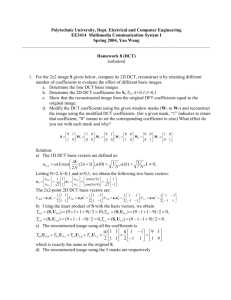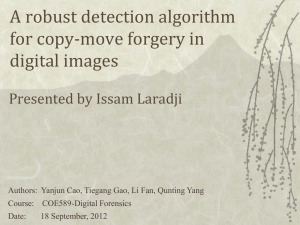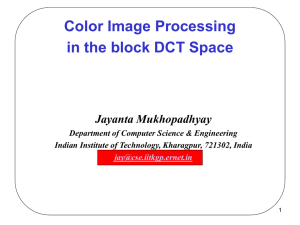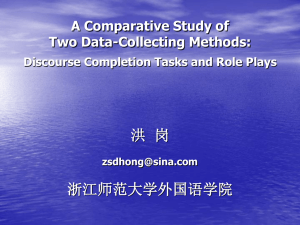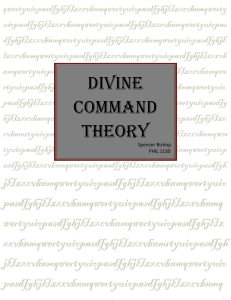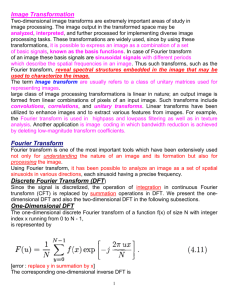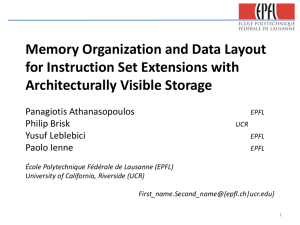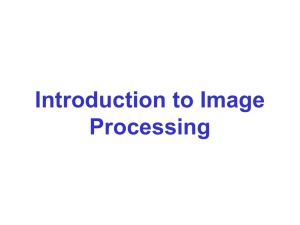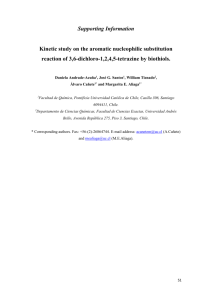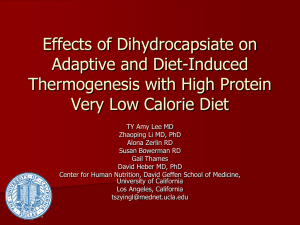Discrete cosine transform
advertisement
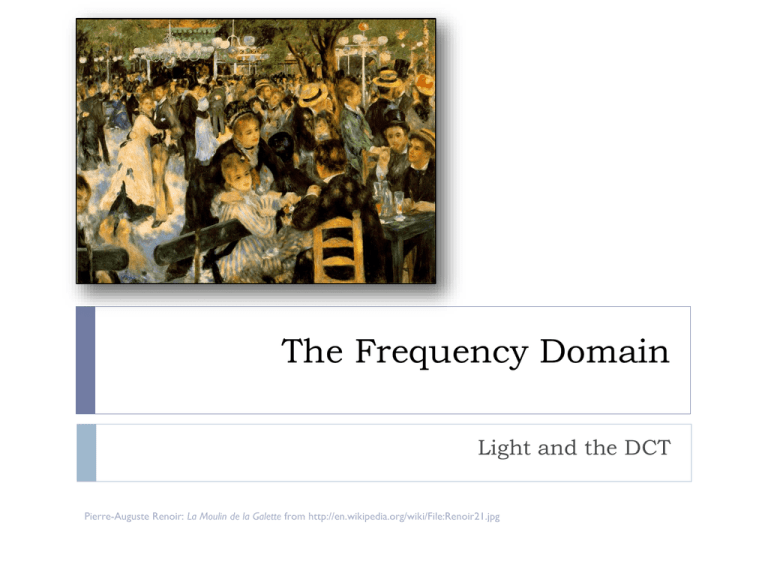
The Frequency Domain
Light and the DCT
Pierre-Auguste Renoir: La Moulin de la Galette from http://en.wikipedia.org/wiki/File:Renoir21.jpg
DCT (1D)
Discrete cosine transform
The strength of the ‘u’ sinusoid is given by C(u)
2
Project f onto the basis function
All samples of f contribute the coefficient
C(0) is the zero-frequency component – the average value!
DCT (1D)
Consider a digital image such that one row has the following samples
Index
0
1
2
3
4
5
6
7
Value
20
12
18
56
83
10
104
114
There are 8 samples so N=8
u is in [0, N-1] or [0, 7]
Must compute 8 DCT coefficients: C(0), C(1), …, C(7)
Start with C(0)
3
DCT (1D)
4
DCT (1D)
Repeating the computation for all u we obtain the
following coefficients
Spatial
domain
Frequency
domain
5
DCT (1D) implementation
Since the DCT coefficients are reals, use array of floats
This approach is O(?)
public static float[] forwardDCT(float[] data) {
final float alpha0 = (float) Math.sqrt(1.0 / data.length);
final float alphaN = (float) Math.sqrt(2.0 / data.length);
float[] result = new float[data.length];
for (int u = 0; u < result.length; u++) {
for (int x = 0; x < data.length; x++) {
result[u] += data[x]*(float)Math.cos((2*x+1)*u*Math.PI/(2*data.length));
}
result[u] *= (u == 0 ? alpha0 : alphaN);
}
return result;
}
6
DCT (2D)
The 2D DCT is given below where the definition for
alpha is the same as before
For an MxN image there are MxN coefficients
Each image sample contributes to each coefficient
Each (u,v) pair corresponds to a ‘pattern’ or ‘basis
function’
7
DCT basis functions (patterns)
Basis functions
8
Basis patterns (imaged functions)
Separability
The DCT is separable
9
The coefficients can be obtained by computing the 1D coefficients for each row
Using the row-coefficients to compute the coefficients of each column (using the
1D forward transform)
Invertability
The DCT is invertible
10
Spatial samples can be recovered from the DCT coefficients
Summary of DCT
The DCT provides energy compaction
Low frequency coefficients have larger magnitude (typically)
High frequency coefficients have smaller magnitude (typically)
Most information is compacted into the lower frequency
coefficients (those coefficients at the ‘upper-left’)
Compaction can be leveraged for compression
11
Use the DCT coefficients to store image data but discard a
certain percentage of the high-frequency coefficients!
JPEG does this
DCT Compaction and Compression
source
12
discarding 95% of dct
discarding 99% of dct
Implementation
13
